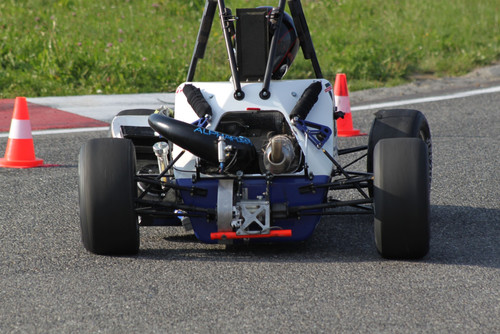We have asked us that question (step steer into non-linear range ?) about 15 ears ago too and were quite skeptic about it. So we did some testing on that issue and we found out that there will still be a similar relation in the non-linear range at least a good correlation for some parameters and less good for others. I'll try to keep this as brief as possible.
We have done non-linear step steer testing on a "high performance" car with slick tires (worst case scenario) and a report with some of the results can be found here:
http://www.dynatune-xl.com/documents.html
As can be seen in the validation report the step steer (page 7/8) was performed in real life to a final lateral acceleration value of 1g (considering that the tire friction coefficient was around 1.25 - as can be seen in the constant radius test max g) and the test worked out quite well in real life for such a high final g-level.
Obviously we encountered problems during the testing from which the most important ones were:
1) The obviously known one to find the "stable" final lateral acceleration value and not to "destroy" the tire before finding that point. We approached that point iteratively.
2) Whereas Yaw Gain and Lateral Acceleration Gain did not have a huge dispersion throughout the whole range of final lateral accelerations, the side slip angle proved to become at the highest g-levels in the transient phase quite peaky and more or less inconsistent. We blamed inconsistent tire temperatures - which changes the performance of the tire quite a lot - and the fact that as we all know dynamic slip angle measurements by itself tend to be quite problematic sometimes by themselves ....
So, in essence, considering all the boundaries the test in real life worked out better than we expected.
Now, in order to simulate the event with the linear bicycle step steer equations (Laplace Transformation) most of the results matched quite well when changing the total axle cornering stiffness from the value of "straight line running" towards the approximate "final" total axle cornering stiffness at the steady state lateral g level. As can be seen on page 7 and 8, Yaw Gain and Lateral Acceleration behavior matched pretty good. Vehicle Side Slip Angle behavior was as already mentioned in the real life test particularly "dynamic" so not finding a perfect match with a simple bicycle model was not a great surprise. But also here, considering the "elementary" state of the model and the complexity of the real world car, the results were surprisingly good.
For those who are interested in learning more on the effect of compliances on transient response functions, one can download on
http://www.dynatune-xl.com a free demo version that allows to do all these linear type analysis including the possibility to investigate the effect of suspension compliance on the transient behavior and delay times. By entering a specific SWA one can also activate the above described procedure of venturing into the "non-linear" behavior.
Cheers,
dynatune

